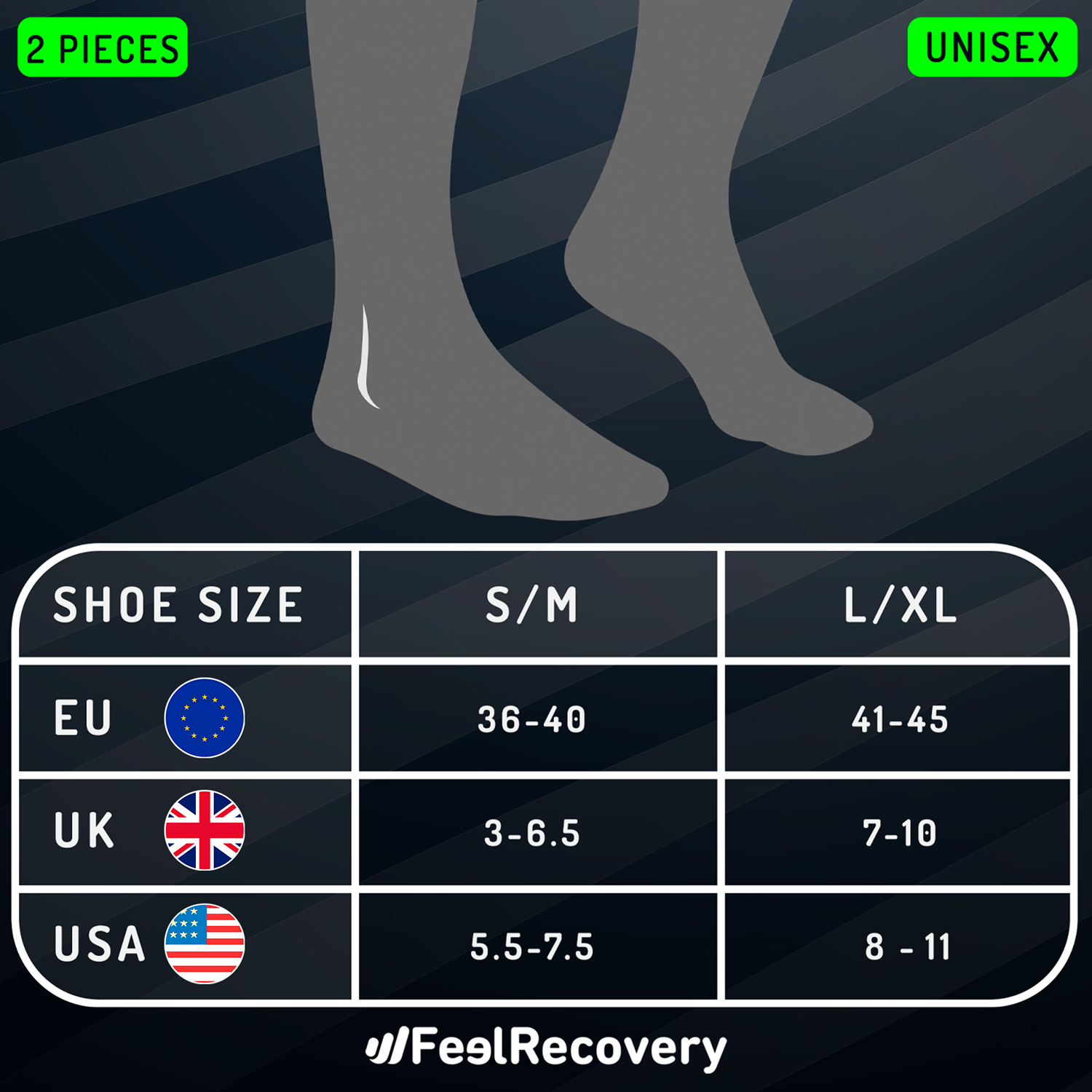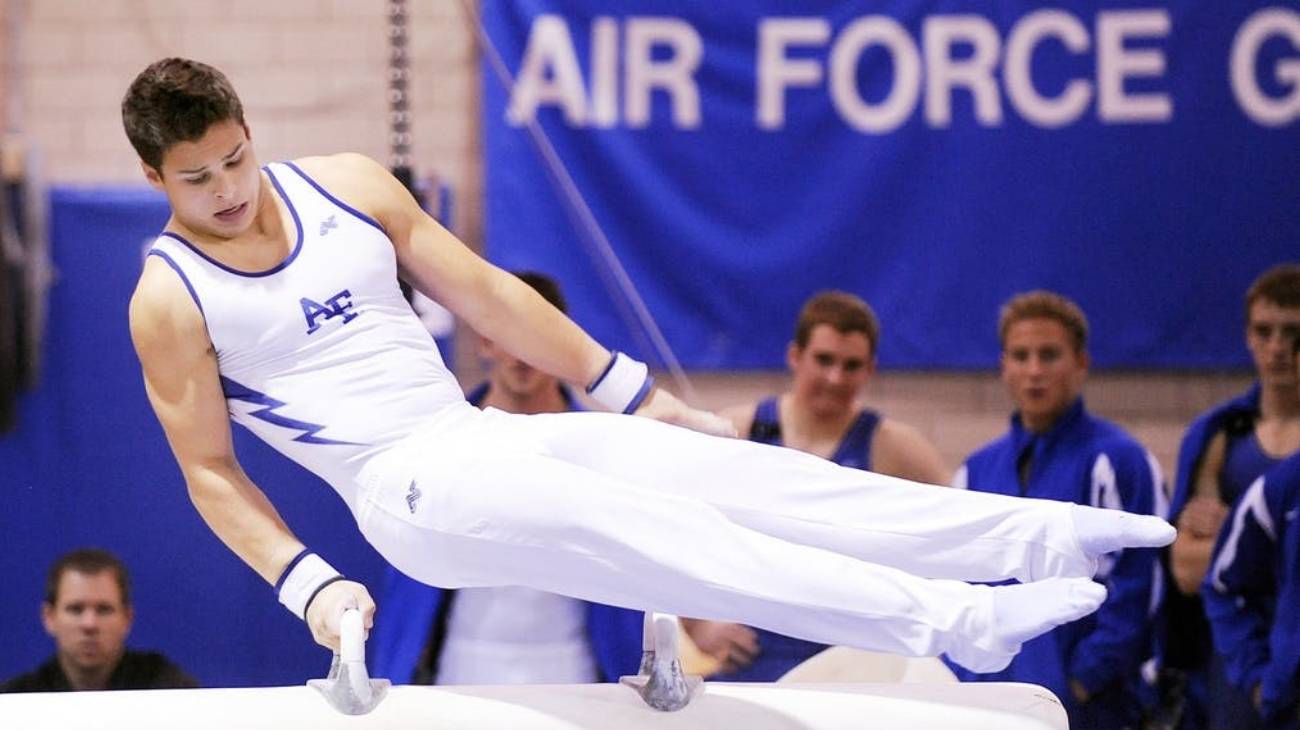Gymnastics is a sport of great discipline, perseverance and perfection in technique. Athletes' sudden jumps and landings are the main causes of foot and ankle injuries.
As we know that gymnastics is your passion, we invite you to review this list of the most common foot and ankle injuries in gymnastics. You will also learn how to use the PRICE therapy in case of a minor injury and which are the best commercial products for a better physical recovery
What are the most common types of foot and ankle injuries in gymnastics?
In the event of an injury, it is advisable to lower the intensity of training and try to make adjustments to landing and landing techniques, which are the most likely scenarios for foot and ankle injuries. As these parts of the body receive a lot of workload, you should be aware of the most common injuries in modern gymnastics.
Sprained ankle
Simply by landing on the wrong foot at a finish line, an ankle sprain can occur. Even running and unintentionally turning the foot to one side is a reason for such an injury.
When the tissues of the ankle are stretched too much, an inflammation appears and must be controlled immediately with the PRICE therapy. This injury accounts for 25% of all possible gymnastics injuries, so training should be geared towards perfecting technique and lowering the chances of injury.
Ankle Tendonitis
The extensors of the toes and the Achilles tendon are the tissues that suffer most from overworked feet. When this occurs, intense pain and inflammation invade the affected area. The central function of the hamstrings is to transmit force to achieve the wonderful spins and spins that gymnasts do in their routines. The entire joint feels the impact of injury, so athletes must be aware of the importance of keeping the lower body healthy.
Ankle fracture
Feet support more than twice the body weight in falls. A fracture ranges from small cracks in the bone structure to a break in several parts of the bones of the foot.
Missteps, twists and trauma in training trigger a fracture that results in several weeks off work until physical recovery begins. When the fracture does not affect the integrity of other soft tissues and there is only partial damage to the bone, recovery takes longer but does not require surgery, which is better for the gymnast.
Contusions
Hard blows cause the impacted area, whether from a blow on the vault or parallel bars, to become sore and blood vessels to rupture to the point of allowing blood to pass under the skin (bruising).
In addition to a blue and purple tinge on the surface, the pain is moderate. Although it is not a serious injury, it is still necessary to rest for several days until the oedema is reduced. The bones and other soft tissues of the feet are bruised and sore, but not broken.
Broken phalanges
When the toe bones fit together after the injury, no surgery or manipulation of the toes is necessary to align them. However, when the fracture breaks the bone into several pieces, surgery is required.
A small fracture can be painless and then become complicated by being thought to be a mild sprain. The phalanges are the most fragile bones of the fingers. Strong blows or a bad position of the foot when falling after an acrobatic stunt can cause them to break.
Plantar fasciitis
The fascia is responsible for absorbing and returning the energy the foot receives after an incredible pirouette. It also maintains the arch of the foot during proper walking. It is a tissue that runs from the heel to the toes, in the metatarsal area. When the fascia is injured there is inflammation and pain in the heel.
The pain when the injury is chronic can last for six months and feel worse in the mornings after the foot spends the night in one position when sleeping.
Toe blisters
In addition to the hands, the feet also get blisters because of the tightness of the shoes and the force placed on the toes. It is an injury that all gymnasts have had at some point in their lives. When blisters are not addressed with rest and medication, they can become really annoying.
Best products for the recovery of ankle and foot injuries in gymnastics
Bestseller
-
2 Ankle Compression Sleeve (Black/Gray)
£20,95 -
2 Ankle Compression Sleeve (Green/Navy)
£20,95 -
2 Ankle Compression Sleeve (Pink/Bordeaux)
£20,95 -
Ice Pack for Foot - Cold Therapy Socks (Black)
£20,95 -
Ice Pack for Foot - Cold Therapy Socks (Green)
£20,95 -
Ice Pack for Foot - Cold Therapy Socks (Pink)
£20,95 -
Microwavable Heated Slippers (Hearts)
£24,95 -
Microwavable Heated Slippers (Oxford)
£24,95 -
Microwavable Heated Slippers (Sport)
£24,95 -
Microwaveable Wheat Bag for Pain Relief (Hearts)
£20,95 -
Microwaveable Wheat Bag for Pain Relief (Oxford)
£20,95 -
Microwaveable Wheat Bag for Pain Relief (Sport)
£20,95
-
Foot Massage Roller for Plantar Fasciitis (Black)
£20,95 -
Foot Massage Roller for Plantar Fasciitis (Green)
£20,95 -
Foot Massage Roller for Plantar Fasciitis (Pink)
£20,95 -
Ice Massage Roller Ball (Black)
£34,95 -
Ice Massage Roller Ball (Green)
£34,95 -
Ice Massage Roller Ball (Pink)
£34,95 -
Soft Density Foam Roller for Recovery (Black)
£34,95 -
Soft Density Foam Roller for Recovery (Green)
£34,95 -
Soft Density Foam Roller for Recovery (Pink)
£34,95 -
Sport Compression Socks (1 Pair) (Black/Gray)
£20,95 -
Sport Compression Socks (1 Pair) (Green/Navy)
£20,95 -
Sport Compression Socks (1 Pair) (Pink/Bordeaux)
£20,95
How to apply the RICE therapy to treat foot and ankle injuries in gymnastics?
The RICE therapy does not make you an expert physiotherapist, it only allows you to save time in the first minutes of an injury and then be examined by a specialist. PRICE is a major update of the therapy that makes it more effective.
- Protection: As we are talking about foot and ankle injuries, athletes should preferably lie down until the injured area can be examined. The ankle should be covered with a classic or elastic bandage to prevent sudden movements.
- Rest: There are ways to maintain relative rest, such as using crutches or a cane, but in the first few minutes the injury should not be moved. Tissues will begin to regenerate when muscle fibres, tendons and ligaments begin to relax. This rest, if required, should last between 48 and 72 hours until the pain begins to subside.
- Ice: It is advisable to apply it with the support of a scarf or special thermal bag. It will allow the pain threshold to be reduced while the injury is deflated as much as possible. Start using ice for 10 minutes and then extend this period up to a maximum of 20 minutes, after which there should be a mandatory rest period.
- Compression: The use of compression ankle braces is recommended in this step, as their function is to keep the tissues warm and control the blood supply. In addition, we avoid the risk of tightening the bandage too much and completely cutting off circulation.
- Elevation: Raising the foot on a cushion above the level of the heart will cause the swelling, pain and oedema to slow down their rate of expansion. This should last at least 72 hours while the tissues regenerate. Gravity serves as an ally in combating the after-effects of injury.
References
- Chilvers, M., Donahue, M., Nassar, L., & II, A. M. (2007). Foot and ankle injuries in elite female gymnasts. Foot & ankle international, 28(2), 214-218. https://journals.sagepub.com/doi/abs/10.3113/FAI.2007.0214
- Vormittag, K., Calonje, R., & Briner, W. W. (2009). Foot and ankle injuries in the barefoot sports. Current sports medicine reports, 8(5), 262-266. https://journals.lww.com/acsm-csmr/Fulltext/2009/09000/Foot_and_Ankle_Injuries_in_the_Barefoot_Sports.12.aspx
- Glynn, B., Laird, J., Herrington, L., Rushton, A., & Heneghan, N. R. (2022). Analysis of landing performance and ankle injury in elite British artistic gymnastics using a modified drop land task: A longitudinal observational study. Physical Therapy in Sport, 55, 61-69. https://www.sciencedirect.com/science/article/pii/S1466853X22000177
- Sobhani, S., Dekker, R., Postema, K., & Dijkstra, P. U. (2013). Epidemiology of ankle and foot overuse injuries in sports: a systematic review. Scandinavian journal of medicine & science in sports, 23(6), 669-686. https://onlinelibrary.wiley.com/doi/abs/10.1111/j.1600-0838.2012.01509.x
- Hamilton, W. G. (1988). Foot and ankle injuries in dancers. Clinics in sports medicine, 7(1), 143-173. https://europepmc.org/article/med/2900693
- Cavallerio, F., Wadey, R., & Wagstaff, C. R. (2016). Understanding overuse injuries in rhythmic gymnastics: A 12-month ethnographic study. Psychology of sport and exercise, 25, 100-109. https://www.sciencedirect.com/science/article/abs/pii/S1469029216300516
- Zetaruk, M. N., Fors, M. V., Zurakowski, D., Mitchell Jr, W. A., & Micheli, L. J. (2006). Injuries and training recommendations in elite rhythmic gymnastics. Apunts: Medicina de l’esport, 100-106. https://www.raco.cat/index.php/Apunts/article/view/164833
- Daly, R. M., Bass, S. L., & Finch, C. F. (2001). Balancing the risk of injury to gymnasts: how effective are the counter measures?. British Journal of Sports Medicine, 35(1), 8-19. https://bjsm.bmj.com/content/35/1/8.short
- Sands, W. A. (2000). Injury prevention in women’s gymnastics. Sports medicine, 30, 359-373. https://link.springer.com/article/10.2165/00007256-200030050-00004
- Bradshaw, E. J., & Hume, P. A. (2012). Biomechanical approaches to identify and quantify injury mechanisms and risk factors in women’s artistic gymnastics. Sports Biomechanics, 11(3), 324-341. https://www.tandfonline.com/doi/abs/10.1080/14763141.2011.650186



























































